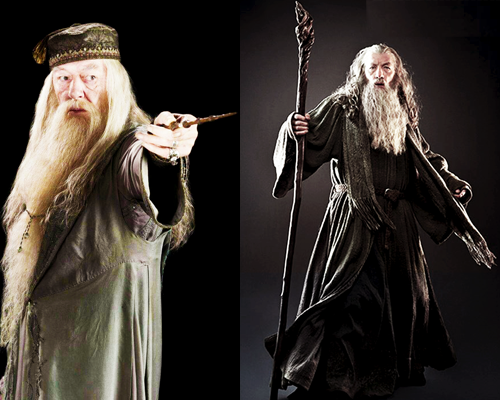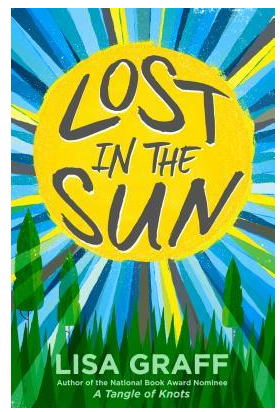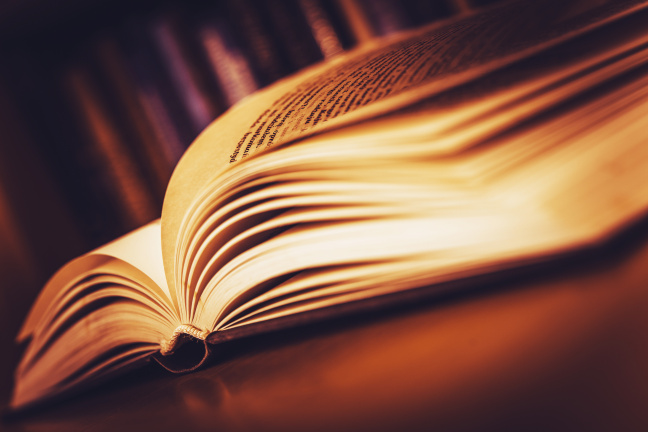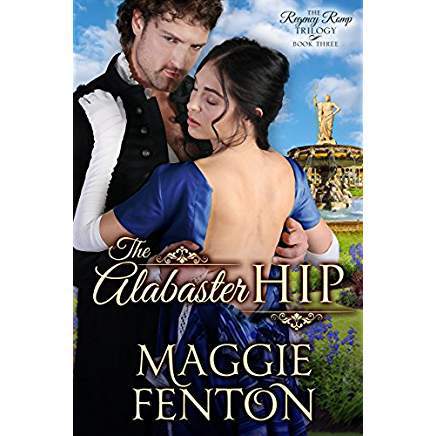In the long run, it would be easier to talk about what fantasy media that JRR Tolkien hasn’t inspired. Considered the “Father of Fantasy,” Tolkien redefined what high fantasy looked like. It has gotten to the point where it’s often hard to tell where inspiration form his work is meant and where it’s subconscious.
Still, in honor of his birthday, it would be fun to look at some of the ways he inspired other artists. Some of them are fairly obvious, but many are surprising.
Harry Potter

Michael Gambon as Dumbledore is pictured on the left. Ian McKellan as Gandalf the Grey is pictured on the right.
One of the most famous examples of Tolkien’s influence is the Harry Potter series. Some of these influences are more obvious; a wizened old magician helping to guide the protagonist on their journey, an object of power that has dark magic that affects the behavior of those near it, a Dark Lord who seeks power and immortality, and on and on. Some of the similarities seem to be an accident but are still similarities regardless; the protagonist’s best friend being a lower class boy who enjoys food or a secondary villain being a long haired wizard who uses his position of power to do evil. That’s just the tip of the iceberg. The similarities are numerous enough that a search for “similarities between lord of the rings and harry potter” gets over 500,000 hits. Whether any of these references are on purpose or not is anybody’s guess – including JKR. While she has stated that he was a bit of an inspiration, she’s a bit fuzzy on whether she purposefully pulled that much inspiration from Tolkien.
Interestingly enough, Ian McKellen was offered the role of Dumbledore after the original actor died. Even more amusing is the fact that Elijah Wood and Daniel Radcliffe have both spoken about how they’re often mixed up by fans.
Led Zeppelin
A number of songs written by the famous rock band include references to Lord of the Rings. The most notable references are in being “The Battle of Evermore” and “Ramble On.” “Ramble On” has the most obvious reference with lyrics like “but Gollum, and the evil one, crept up” and “‘Twas in the darkest depths of Mordor.” The Battle of Evermore does contain some obvious references as well. It discusses a dark lord, queen of light, dragons of darkness, and “ring wraiths ride in black.” The song also draws influence from Celtic music, and Tolkien based some of his cultures off of the Celts.
These aren’t the only songs that feature references although they are some of the most obvious ones. “Misty Mountain Hop” is a reference to the Misty Mountains that Bilbo travels to. Fans speculate that “Over the Hills and Far Away” references Sam and Frodo’s journey to Mordor throughout the books.
It’s no surprise to fans that the band draws influence from Tolkien so often. Robert Plant is a fan of Tolkien, even naming his dog after the character Strider. Jimmy Page, who writes most of the band’s lyrics, is a fan of magic and mythology, so many fans believe he has also read Tolkien.
A Song of Ice and Fire
Another obvious example of Tolkien influence is George RR Martin’s epic A Song of Ice and Fire series. GRRM has stated that Tolkien influenced how he built up his world of magic. As GRRM explained, he ascribes to Tolkien’s feelings on how magic should be used sparingly so it stays magical. In Tolkien’s stories, people don’t use magic as if it is nothing. It happens in moments that make the magic seem amazing, such as Frodo’s healing after he is stabbed by a morgul blade or the rescue by the eagles. In a similar vein, ASoIaF turns into a story where magic is slowly coming back. First this appears as a dragon or direwolf cropping up here and there, to smaller acts of magic happening in isolated instances, all finally flowing into epic scale battles between dragons and wights.

Pictured on the left are the eagles from The Hobbit soaring over mountains. Pictured on the right are Daenerys’ dragons in season 6 of the show, soaring over ships.
Of course, who can forget Sean Bean’s heartfelt performances as both Boromir of Gondor and Lord Eddard Stark? Or his very similar ends in both stories?
The Elder Scrolls: Oblivion
The fourth installment in the popular video game The Elder Scrolls pulls inspiration and even gives a bit of a shout out to Tolkien fans. The game draws inspiration from Tolkien’s orcs, using much of his original design as inspiration for the Daedra. The other most notable reference is The White-Gold Tower that appears in the game, which bears a striking resemblance to Orthanc, the tower that Saruman sets up in during the series. Additionally, there are a number of Easter Eggs that appear as a nod to fans of both series.
The first and most obvious is a character in the game named Boromir. This is a reference not just to the character, but also to the fact that Sean Bean, who played Boromir in the movies, voices a character in the game. Another reference is a ring the player receives upon completion of a quest which has the the same inscription as the One Ring.
The third and most involved reference is a character mentioned in a manifest the player receives. The character, who was killed by a villain, is mentioned by name. A description of what he had on him when he was killed is given also. The character’s name is Oford Gabings, which is an anagram of Frodo Baggins. The items he was carrying are also a reference to items that Frodo carries throughout the series. They include a travel cloak with a silver and green leaf fastener, an enchanted shortsword with inlaid writing, a golden ring with an inscription, and a leather bound travel journal. These are references to, in order, the cloak given to Frodo in Llothlorien, Frodo’s sword Sting, the One Ring, and Bilbo’s journal, which Frodo took with him.
The Dark Tower
The epic saga by Stephen King takes its inspiration from many places, including Tolkien. The science fiction western pulls the bulk of its inspiration from a poem by Robert Browning, but there is an important element that Stephen King has said comes from Tolkien: the use of a fictional language. Tolkien had been fascinated by language since he was a teenager and spent much of his past time inventing languages. It was an odd past time to be sure, but one he excelled at.
This invention of language was a skill he demonstrated much of in the writing of The Lord of the Rings and the Silmarrillion. Some of the languages he invented included Khuzdul, The Black Speech, Rohirric, Sindaran, Númenórean, Quenya, and dozens of others. In addition to inventing these languages, he also developed cultural backstories for the languages as well. This element of his writing, while not the first to ever exist, was the most involved and detailed example of it. The fascination with his language skills became so entrenched in fantasy that it’s expected for “artlangs” to be in contemporary fantasy. Stephen King, inspired by this, developed his own form of language for the world of Dark Tower called High Speech. He also took inspiration from Tolkien’s naming conventions, with his world being called Mid-World, in a similar fashion to Middle Earth.
written by: kassie
Advertisements
Share this:
Like this:Like Loading...
Related
 Michael Gambon as Dumbledore is pictured on the left. Ian McKellan as Gandalf the Grey is pictured on the right.
One of the most famous examples of Tolkien’s influence is the Harry Potter series. Some of these influences are more obvious; a wizened old magician helping to guide the protagonist on their journey, an object of power that has dark magic that affects the behavior of those near it, a Dark Lord who seeks power and immortality, and on and on. Some of the similarities seem to be an accident but are still similarities regardless; the protagonist’s best friend being a lower class boy who enjoys food or a secondary villain being a long haired wizard who uses his position of power to do evil. That’s just the tip of the iceberg. The similarities are numerous enough that a search for “similarities between lord of the rings and harry potter” gets over 500,000 hits. Whether any of these references are on purpose or not is anybody’s guess – including JKR. While she has stated that he was a bit of an inspiration, she’s a bit fuzzy on whether she purposefully pulled that much inspiration from Tolkien.
Interestingly enough, Ian McKellen was offered the role of Dumbledore after the original actor died. Even more amusing is the fact that Elijah Wood and Daniel Radcliffe have both spoken about how they’re often mixed up by fans.
Led Zeppelin
A number of songs written by the famous rock band include references to Lord of the Rings. The most notable references are in being “The Battle of Evermore” and “Ramble On.” “Ramble On” has the most obvious reference with lyrics like “but Gollum, and the evil one, crept up” and “‘Twas in the darkest depths of Mordor.” The Battle of Evermore does contain some obvious references as well. It discusses a dark lord, queen of light, dragons of darkness, and “ring wraiths ride in black.” The song also draws influence from Celtic music, and Tolkien based some of his cultures off of the Celts.
These aren’t the only songs that feature references although they are some of the most obvious ones. “Misty Mountain Hop” is a reference to the Misty Mountains that Bilbo travels to. Fans speculate that “Over the Hills and Far Away” references Sam and Frodo’s journey to Mordor throughout the books.
It’s no surprise to fans that the band draws influence from Tolkien so often. Robert Plant is a fan of Tolkien, even naming his dog after the character Strider. Jimmy Page, who writes most of the band’s lyrics, is a fan of magic and mythology, so many fans believe he has also read Tolkien.
A Song of Ice and Fire
Another obvious example of Tolkien influence is George RR Martin’s epic A Song of Ice and Fire series. GRRM has stated that Tolkien influenced how he built up his world of magic. As GRRM explained, he ascribes to Tolkien’s feelings on how magic should be used sparingly so it stays magical. In Tolkien’s stories, people don’t use magic as if it is nothing. It happens in moments that make the magic seem amazing, such as Frodo’s healing after he is stabbed by a morgul blade or the rescue by the eagles. In a similar vein, ASoIaF turns into a story where magic is slowly coming back. First this appears as a dragon or direwolf cropping up here and there, to smaller acts of magic happening in isolated instances, all finally flowing into epic scale battles between dragons and wights.
Michael Gambon as Dumbledore is pictured on the left. Ian McKellan as Gandalf the Grey is pictured on the right.
One of the most famous examples of Tolkien’s influence is the Harry Potter series. Some of these influences are more obvious; a wizened old magician helping to guide the protagonist on their journey, an object of power that has dark magic that affects the behavior of those near it, a Dark Lord who seeks power and immortality, and on and on. Some of the similarities seem to be an accident but are still similarities regardless; the protagonist’s best friend being a lower class boy who enjoys food or a secondary villain being a long haired wizard who uses his position of power to do evil. That’s just the tip of the iceberg. The similarities are numerous enough that a search for “similarities between lord of the rings and harry potter” gets over 500,000 hits. Whether any of these references are on purpose or not is anybody’s guess – including JKR. While she has stated that he was a bit of an inspiration, she’s a bit fuzzy on whether she purposefully pulled that much inspiration from Tolkien.
Interestingly enough, Ian McKellen was offered the role of Dumbledore after the original actor died. Even more amusing is the fact that Elijah Wood and Daniel Radcliffe have both spoken about how they’re often mixed up by fans.
Led Zeppelin
A number of songs written by the famous rock band include references to Lord of the Rings. The most notable references are in being “The Battle of Evermore” and “Ramble On.” “Ramble On” has the most obvious reference with lyrics like “but Gollum, and the evil one, crept up” and “‘Twas in the darkest depths of Mordor.” The Battle of Evermore does contain some obvious references as well. It discusses a dark lord, queen of light, dragons of darkness, and “ring wraiths ride in black.” The song also draws influence from Celtic music, and Tolkien based some of his cultures off of the Celts.
These aren’t the only songs that feature references although they are some of the most obvious ones. “Misty Mountain Hop” is a reference to the Misty Mountains that Bilbo travels to. Fans speculate that “Over the Hills and Far Away” references Sam and Frodo’s journey to Mordor throughout the books.
It’s no surprise to fans that the band draws influence from Tolkien so often. Robert Plant is a fan of Tolkien, even naming his dog after the character Strider. Jimmy Page, who writes most of the band’s lyrics, is a fan of magic and mythology, so many fans believe he has also read Tolkien.
A Song of Ice and Fire
Another obvious example of Tolkien influence is George RR Martin’s epic A Song of Ice and Fire series. GRRM has stated that Tolkien influenced how he built up his world of magic. As GRRM explained, he ascribes to Tolkien’s feelings on how magic should be used sparingly so it stays magical. In Tolkien’s stories, people don’t use magic as if it is nothing. It happens in moments that make the magic seem amazing, such as Frodo’s healing after he is stabbed by a morgul blade or the rescue by the eagles. In a similar vein, ASoIaF turns into a story where magic is slowly coming back. First this appears as a dragon or direwolf cropping up here and there, to smaller acts of magic happening in isolated instances, all finally flowing into epic scale battles between dragons and wights.
 Pictured on the left are the eagles from The Hobbit soaring over mountains. Pictured on the right are Daenerys’ dragons in season 6 of the show, soaring over ships.
Of course, who can forget Sean Bean’s heartfelt performances as both Boromir of Gondor and Lord Eddard Stark? Or his very similar ends in both stories?
The Elder Scrolls: Oblivion
The fourth installment in the popular video game The Elder Scrolls pulls inspiration and even gives a bit of a shout out to Tolkien fans. The game draws inspiration from Tolkien’s orcs, using much of his original design as inspiration for the Daedra. The other most notable reference is The White-Gold Tower that appears in the game, which bears a striking resemblance to Orthanc, the tower that Saruman sets up in during the series. Additionally, there are a number of Easter Eggs that appear as a nod to fans of both series.
The first and most obvious is a character in the game named Boromir. This is a reference not just to the character, but also to the fact that Sean Bean, who played Boromir in the movies, voices a character in the game. Another reference is a ring the player receives upon completion of a quest which has the the same inscription as the One Ring.
The third and most involved reference is a character mentioned in a manifest the player receives. The character, who was killed by a villain, is mentioned by name. A description of what he had on him when he was killed is given also. The character’s name is Oford Gabings, which is an anagram of Frodo Baggins. The items he was carrying are also a reference to items that Frodo carries throughout the series. They include a travel cloak with a silver and green leaf fastener, an enchanted shortsword with inlaid writing, a golden ring with an inscription, and a leather bound travel journal. These are references to, in order, the cloak given to Frodo in Llothlorien, Frodo’s sword Sting, the One Ring, and Bilbo’s journal, which Frodo took with him.
The Dark Tower
The epic saga by Stephen King takes its inspiration from many places, including Tolkien. The science fiction western pulls the bulk of its inspiration from a poem by Robert Browning, but there is an important element that Stephen King has said comes from Tolkien: the use of a fictional language. Tolkien had been fascinated by language since he was a teenager and spent much of his past time inventing languages. It was an odd past time to be sure, but one he excelled at.
This invention of language was a skill he demonstrated much of in the writing of The Lord of the Rings and the Silmarrillion. Some of the languages he invented included Khuzdul, The Black Speech, Rohirric, Sindaran, Númenórean, Quenya, and dozens of others. In addition to inventing these languages, he also developed cultural backstories for the languages as well. This element of his writing, while not the first to ever exist, was the most involved and detailed example of it. The fascination with his language skills became so entrenched in fantasy that it’s expected for “artlangs” to be in contemporary fantasy. Stephen King, inspired by this, developed his own form of language for the world of Dark Tower called High Speech. He also took inspiration from Tolkien’s naming conventions, with his world being called Mid-World, in a similar fashion to Middle Earth.
written by: kassie
Advertisements
Share this:
Pictured on the left are the eagles from The Hobbit soaring over mountains. Pictured on the right are Daenerys’ dragons in season 6 of the show, soaring over ships.
Of course, who can forget Sean Bean’s heartfelt performances as both Boromir of Gondor and Lord Eddard Stark? Or his very similar ends in both stories?
The Elder Scrolls: Oblivion
The fourth installment in the popular video game The Elder Scrolls pulls inspiration and even gives a bit of a shout out to Tolkien fans. The game draws inspiration from Tolkien’s orcs, using much of his original design as inspiration for the Daedra. The other most notable reference is The White-Gold Tower that appears in the game, which bears a striking resemblance to Orthanc, the tower that Saruman sets up in during the series. Additionally, there are a number of Easter Eggs that appear as a nod to fans of both series.
The first and most obvious is a character in the game named Boromir. This is a reference not just to the character, but also to the fact that Sean Bean, who played Boromir in the movies, voices a character in the game. Another reference is a ring the player receives upon completion of a quest which has the the same inscription as the One Ring.
The third and most involved reference is a character mentioned in a manifest the player receives. The character, who was killed by a villain, is mentioned by name. A description of what he had on him when he was killed is given also. The character’s name is Oford Gabings, which is an anagram of Frodo Baggins. The items he was carrying are also a reference to items that Frodo carries throughout the series. They include a travel cloak with a silver and green leaf fastener, an enchanted shortsword with inlaid writing, a golden ring with an inscription, and a leather bound travel journal. These are references to, in order, the cloak given to Frodo in Llothlorien, Frodo’s sword Sting, the One Ring, and Bilbo’s journal, which Frodo took with him.
The Dark Tower
The epic saga by Stephen King takes its inspiration from many places, including Tolkien. The science fiction western pulls the bulk of its inspiration from a poem by Robert Browning, but there is an important element that Stephen King has said comes from Tolkien: the use of a fictional language. Tolkien had been fascinated by language since he was a teenager and spent much of his past time inventing languages. It was an odd past time to be sure, but one he excelled at.
This invention of language was a skill he demonstrated much of in the writing of The Lord of the Rings and the Silmarrillion. Some of the languages he invented included Khuzdul, The Black Speech, Rohirric, Sindaran, Númenórean, Quenya, and dozens of others. In addition to inventing these languages, he also developed cultural backstories for the languages as well. This element of his writing, while not the first to ever exist, was the most involved and detailed example of it. The fascination with his language skills became so entrenched in fantasy that it’s expected for “artlangs” to be in contemporary fantasy. Stephen King, inspired by this, developed his own form of language for the world of Dark Tower called High Speech. He also took inspiration from Tolkien’s naming conventions, with his world being called Mid-World, in a similar fashion to Middle Earth.
written by: kassie
Advertisements
Share this:




